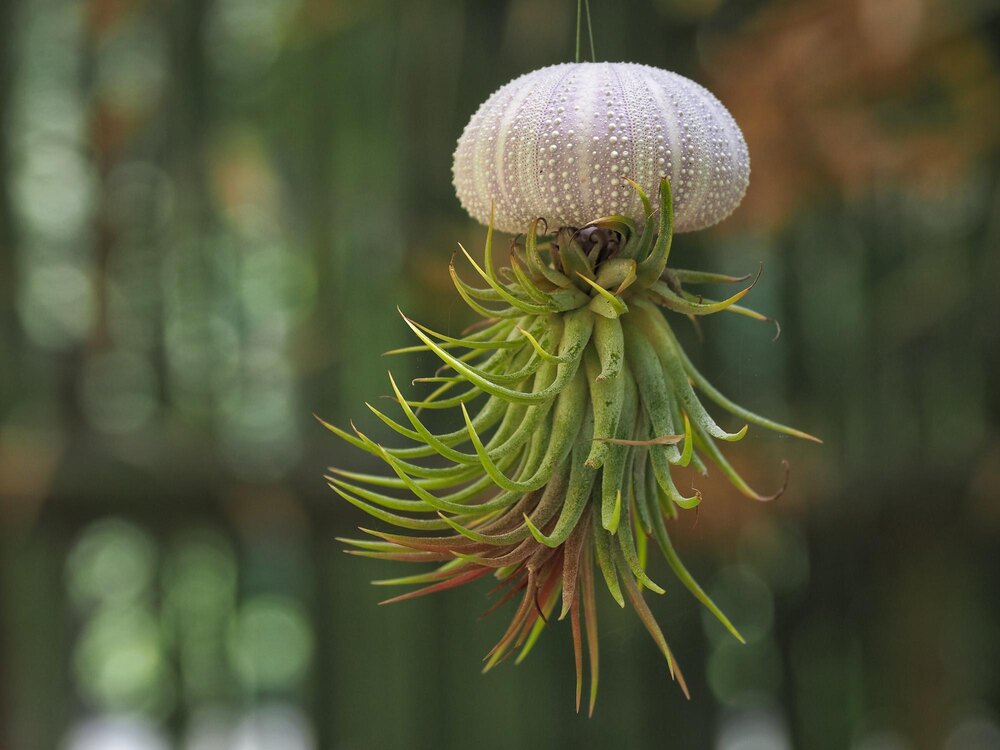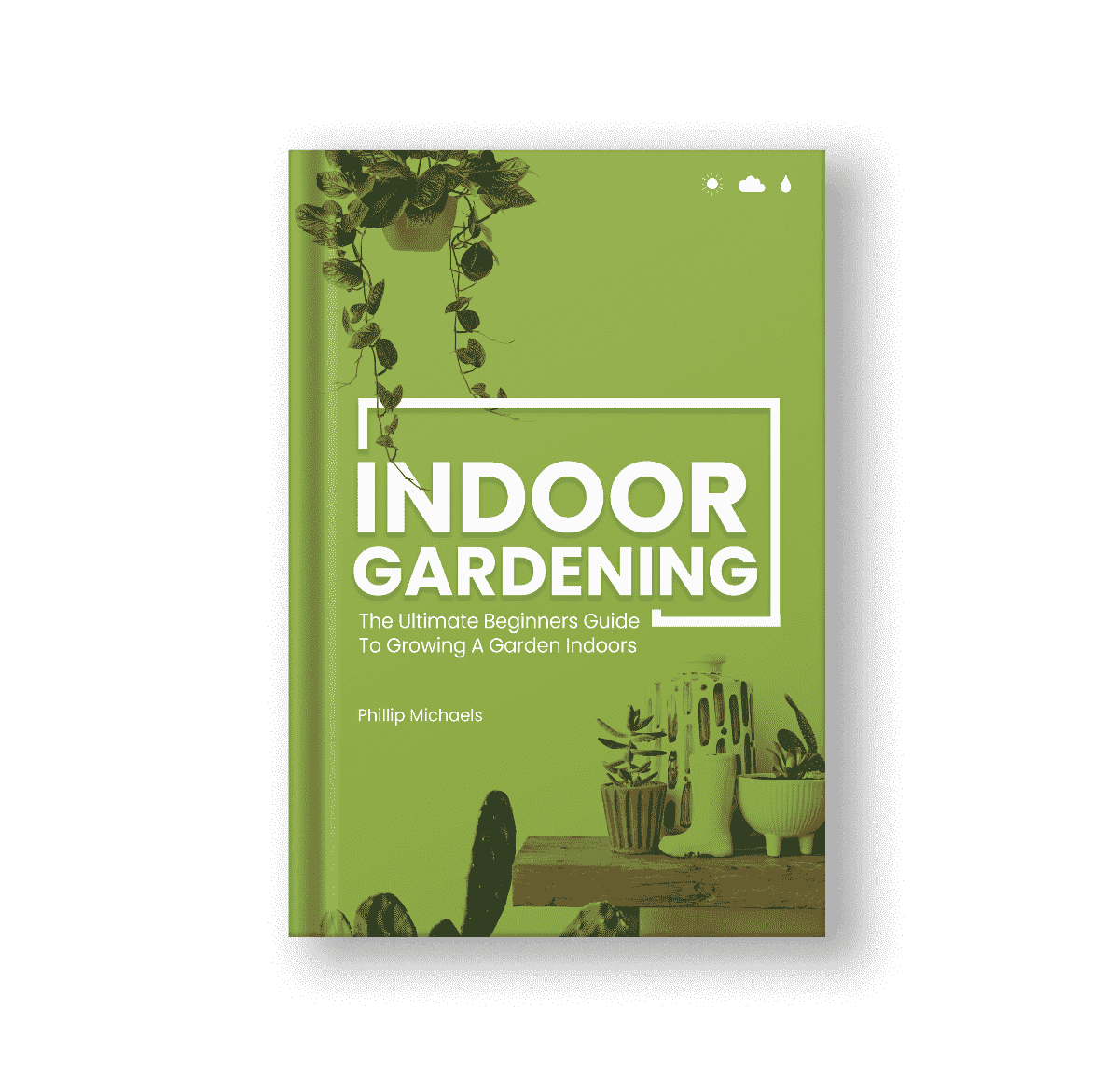If you’re intrigued by houseplants but intimidated by the maintenance or the need for soil, allow us to introduce you to one of nature’s coolest botanical rebels: air plants. These soil-free wonders bring living green into your home in unexpected ways; no pots, no mess, and they’re easy to care for.
In this post, we’ll dive into what air plants are, why people love them, how to care for them, common types, styling tips, troubleshooting, and propagation. By the end, you’ll have everything you need to know to start growing your very now air plants!
What Exactly Is an “Air Plant”?
Air plants are members of the genus Tillandsia, part of the bromeliad family. Unlike typical potted houseplants, air plants don’t depend on soil. Instead, they cling (epiphytically) to surfaces, rocks, bark, or even other plants in their natural habitat—and gather moisture and nutrients through their leaves from air, rain, or debris.
That’s where the name “air plant” comes from!
There are hundreds of Tillandsia species—some from humid forests, others from drier, desert-like environments. Because of that diversity, their care can vary a little (especially around watering and light). But overall, they’re known for being surprisingly low-maintenance once you get the hang of it. Of course, if you’re growing indoors, there are a handful of varieties that will work best, we’ll touch on those shortly.
Why Grow Air Plants?
There are plenty of terrific reasons to grow air plants, not the least of which is their usually growing habits. Here are some of the best reasons to love air plants:
-
Soil-free, mess-free décor
Since they don’t need soil, you can display them in creative, minimal ways: mounted on driftwood, tucked into seashells, hanging in glass globes, or perched on decorative objects. (Cornell Cooperative Extension) -
Low-maintenance (if done right)
No repotting or messy soil. Just a bit of water, light, and airflow—and they’re often quite forgiving. (Houseplant Journal) -
Compact & versatile
Perfect for small apartments, desks, bathrooms, or shelves. -
Fun lifecycle & propagation
Most air plants flower once, then produce “pups” (baby offsets). Watching that cycle unfold is incredibly rewarding.
Caring for Air Plants: The Essentials
Air plants are low-maintenance, but not “no-maintenance.” Here’s what you need to know to keep them happy and thriving.
1. Light — Bright, Indirect Is Best
Air plants prefer bright, indirect light—similar to what they’d get under a forest canopy.
- East- or west-facing windows are ideal.
- South-facing windows can work in winter, but may be too harsh in summer.
- Avoid dark corners—they’ll struggle there.
If your light is limited, try grow lights or fluorescent lighting.
2. Water — Not Too Much, Not Too Little
Watering is the trickiest part of air plant care, but once you get a rhythm, it’s easy.
Methods
- Soaking: Submerge the plant in room-temperature water for 20–60 minutes (about once per week).
- Rinsing: Rinse under running water 1–2 times a week. Do so for a few minutes and shake dry afterward.
- Misting: Use a spray bottle between soakings if your air is very dry. This is often useful in the hottest parts of summer or if you have very dry air during the colder months.
Aftercare
Shake off excess water and let the plant dry upside down in good airflow for 1–3 hours. Never leave them wet—this leads to rot. (Air Plant City)
Signs of overwatering: blackened leaves, mushy base, or foul odor.
Signs of underwatering: crisp leaves, curling edges, or drooping.
If you see any of the above signs, make sure to adjust your watering habits accordingly.
3. Temperature & Humidity
Air plants prefer:
- 60–85 °F (16–29 °C) during the day
- Above 45 °F (7 °C) at night
They love moderate to high humidity. You can increase it by:
- Misting regularly
- Running a humidifier
- Grouping plants together
- Misting them occasionally as described above
- Use a pebble tray or similar device
4. Fertilizer
While not essential, feeding air plants occasionally encourages growth and vibrant blooms.
Use a diluted, bromeliad-safe fertilizer (or a general houseplant fertilizer at ¼ strength) once a month during soaking. Be careful not to over-fertilize, it can burn the leaves. (Cornell Extension)
5. Air Circulation
Good airflow is vital. Stagnant air encourages rot. After watering, make sure plants dry fully before returning them to display containers and place them in a location that gets proper ventilation and airflow. (Air Plant City)
Common Air Plant Varieties
Below, we’ve listed out some of the most common varieties. Most of these will do well indoors with proper care, but be sure to read the care tips, as the level of effort needed to grow them can differ.
| Species | Highlights | Care Tips |
|---|---|---|
| Tillandsia ionantha | Compact, colorful when blooming | Great for beginners; moderate light and weekly soaking |
| Tillandsia xerographica | Silvery, sculptural rosette | Likes bright light and less frequent watering |
| Tillandsia caput-medusae | Tentacle-like leaves | Needs regular watering and good airflow |
| Tillandsia usneoides (Spanish moss) | Draping, soft, hanging | Prefers humidity and frequent misting |
If you’re just starting, begin with ionantha or other silvery species, they’re more forgiving and easiest to grow.
Styling & Display Ideas
Air plants are a designer’s dream. You can get creative since they don’t need soil. Try:
- Glass globes or terrariums (open tops only for proper airflow)
- Mounted on driftwood or cork bark
- Placed in shells, crystals, or decorative bowls
- Hanging mobiles or string installations
- Vertical garden frames or shadow boxes
Just make sure the display allows airflow and easy removal for watering, avoid fully sealed containers as these can lead to root rot. (Cornell Extension)
Troubleshooting: Common Air Plant Problems
While easy to grow, air plants are not immune to problems. Here’s a quick list of some of the most common problems you might face, and how to fix them.
| Problem | Symptoms | Cause & Fix |
|---|---|---|
| Brown, crispy tips | Dry, brittle edges | Underwatering → Increase watering or humidity |
| Mushy base / black spots | Soft, decaying leaves | Overwatering → Reduce soaking time, improve airflow |
| Bleached color | Faded or whitish leaves | Too much sunlight → Move to filtered light |
| Droopy leaves | Limp or soft | Dehydration → Soak plant |
| Curling edges | Leaves roll inward | Needs more moisture |
| Slow growth | No visible change | Add fertilizer or increase light |
| Pests (rare) | Tiny insects or sticky residue | Wipe with alcohol-dipped cotton swab (BHG Guide) |
Flowering & Propagation
Most air plants bloom once in their life cycle, but it’s a spectacular show; often with vivid pinks, purples, or reds.
After blooming, the mother plant produces pups (baby offsets) around its base. When a pup reaches 1/3 the size of the parent, gently twist or snip it off and grow it on its own.
Growing from seed is possible but slow, most hobbyists prefer propagation by pups. (Gardener’s World)
Simple Care Schedule
| Frequency | Task |
|---|---|
| Weekly | Soak or rinse, then dry thoroughly |
| Between soaks | Light misting if air is dry |
| Monthly | Fertilize during soak |
| Seasonally | Rotate placement for even light |
| Ongoing | Check for pests, monitor moisture |
Adjust based on your home’s humidity and light levels.
FAQs About Air Plants
Q: Can I use tap water?
Yes, but let it sit overnight to let chlorine evaporate. Filtered or rainwater is even better. (BHG Watering Guide)
Q: How often should I water?
Once a week is a great starting point, adjust for your humidity level and opt to mist between waterings if possible.
Q: How long do they live?
Most live 2–5 years, producing pups that extend their lineage indefinitely.
Q: Can I keep them in closed glass containers?
You can, but only temporarily. They need ventilation and must dry completely after watering to prevent rot. (Cornell Cooperative Extension)
Final Thoughts
Air plants are a wonderful and easy way to bring living green into your home. Their soil-free nature and creative display options make them perfect for any lifestyle.
With a little light, water, and airflow, your air plant collection will thrive and reward you with blooms and new pups for years to come.
Don’t be discouraged if your first attempt isn’t perfect, each home’s environment is unique. Start small, observe, adjust, and soon you’ll have a thriving display of these otherworldly, low-maintenance beauties.
References:







